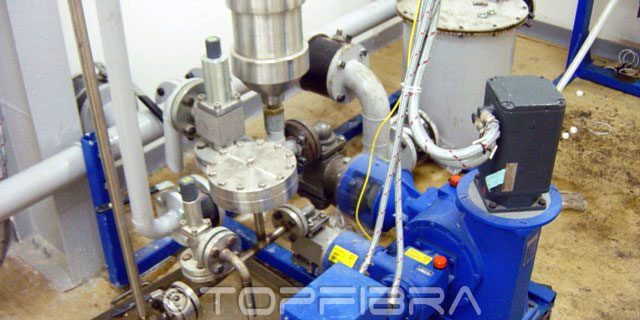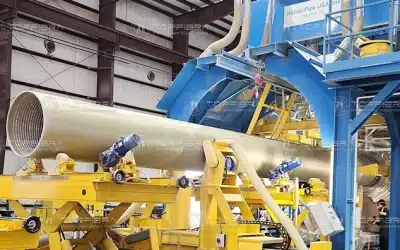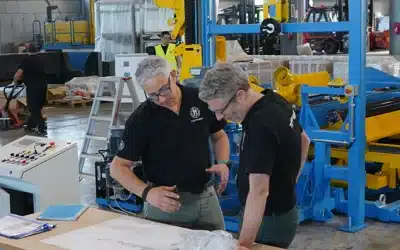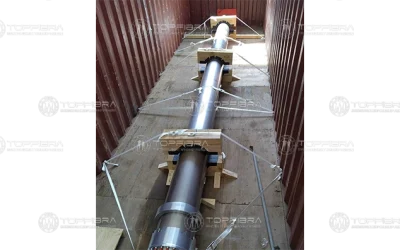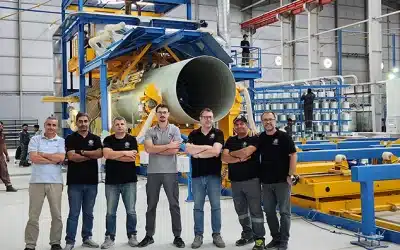PUMP CALIBRATION – A NIGHTMARE, ON STANDARD CFW MACHINES!
We all know very well that your plant downtime is the period during which the plant is off-line and not producing any products nor adding value to the business and your customers. It can also be called idle time, downtime, or off-line period.
Certainly, an excessive amount of downtime can indicate unreliable equipment and cause extensive losses. What is even worse is to start up production and face one of the worst nightmares faced with standard CFW machines.
Have you ever calibrated the piston-type resin pumps of a dosing system for GRP pipe production?
Maybe you saw your technician going up and down, weighing the resin, changing parameters, adjusting the pumps through trial and error?
It is always a lottery. And even if you are lucky enough to discover the correct calibration, your success will last few minutes, hoping that the viscosity of the resin will be the same during the entire production phase.
It is important for you to know that at present, only a few Continuous Filament Winding machines are able to produce effective pipes, with performances that are equal or superior to the original average objectives.
The most disconcerting fact is that many entrepreneurs continue to look for new solutions in order to reduce the production costs, to be more competitive on the market, or increase the profits when the main problem is in the machine itself.
So, how is it possible to solve these issues in a definite and rapid way?
Let me reveal a secret to you: to correct the weak points on your existing manufacturing plant is much easier than you can imagine. Let’s start understanding the resin and catalyst dosing system.
DOSING THE RESINS
As you well know, the most expensive raw material in GRP pipe production is the resin.
What is the role of the resin in a pipe? It serves as the “glue” that binds the fibers together after the curing (when the resin sets). The pipe liner resin also provides the final corrosion resistance to the transported fluids. It’s chemical and physical properties play a key role in the pipe design.
But you need to apply the exact quantity of resin because an excess of resin leads to waste/scrap and lower pipe specifications. Yes, you have understood correctly, if you apply more resin than the exact needs for the pipe, you are spending more money and producing an inferior quality pipe.
If you keep that concept in your mind at all times, I am sure that you can expect at least 2 things from your production technology:
- Obtain a good pipe recipe, where the quantity of the resin is the correct one for the laminate;
- Obtain a dosing system that is capable of doing the exact required quantity during the production.
PIPE RECIPE
The recipe of a GRP pipe combines different materials such as resin, fibers, fillers, tissues, etc. and the behavior of such materials is not exactly the same in every manufacturing plant. For that reason, during a production plant start-up, adjustments are needed to correctly calibrate the pipe design program, but such calibration can be done only if you are sure that the CFW machine is correctly dosing the raw materials to produce the GRP pipe.
DOSING SYSTEM OF A CFW MACHINE
Unfortunately, and as I indicated before, most of the GRP plants are not performing well and have manufacturing costs that are 5-7% higher than optimal, due to their outdated CFW dosing system.
Why outdated?
Several years ago, when continuous winders were installed in the composite market, the electronic systems were not well enough developed to assure good dosing precision. The solution, at that time, was to choose adequate resin pumps that would perform their job well.
Before starting the production, the operator would start the calibration of the pumps, knowing that the dosing would change slightly during the course of the production run, due to changes in the resin viscosity, production speed, resin temperature, etc.
Years ago, this solution was good enough because the market was not so competitive, but in today’s competitive market, if you are still calibrating your pumps the old way, I would strongly advise you to improve your dosing system as fast as possible.
With the new dosing system, NO MORE RESIN PUMP CALIBRATIONS ARE REQUIRED! And the high precision dosing is constant for all pipe diameters and production speeds.
The pumps must be gear or lobe pumps because they can give you a constant flow and they are PLC controlled by a mass flowmeter, therefore NOT PISTON PUMPS.
Let go back briefly to the gear or lobe pumps controlled by electronic flowmeters. What does it mean exactly for your production?
To read the complete article click on the following button:

